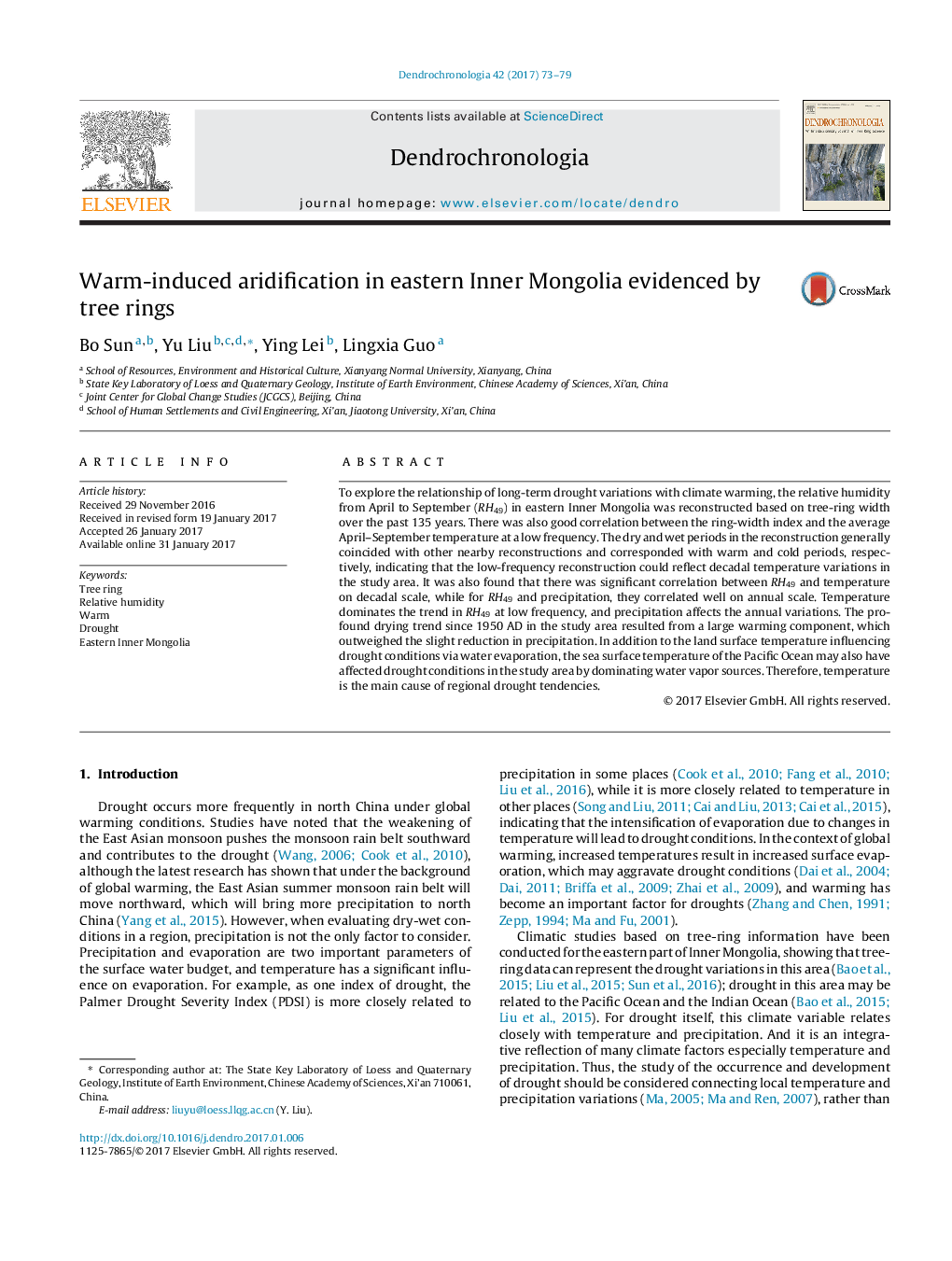| Article ID | Journal | Published Year | Pages | File Type |
|---|---|---|---|---|
| 4759261 | Dendrochronologia | 2017 | 7 Pages |
Abstract
To explore the relationship of long-term drought variations with climate warming, the relative humidity from April to September (RH49) in eastern Inner Mongolia was reconstructed based on tree-ring width over the past 135 years. There was also good correlation between the ring-width index and the average April-September temperature at a low frequency. The dry and wet periods in the reconstruction generally coincided with other nearby reconstructions and corresponded with warm and cold periods, respectively, indicating that the low-frequency reconstruction could reflect decadal temperature variations in the study area. It was also found that there was significant correlation between RH49 and temperature on decadal scale, while for RH49 and precipitation, they correlated well on annual scale. Temperature dominates the trend in RH49 at low frequency, and precipitation affects the annual variations. The profound drying trend since 1950 AD in the study area resulted from a large warming component, which outweighed the slight reduction in precipitation. In addition to the land surface temperature influencing drought conditions via water evaporation, the sea surface temperature of the Pacific Ocean may also have affected drought conditions in the study area by dominating water vapor sources. Therefore, temperature is the main cause of regional drought tendencies.
Related Topics
Physical Sciences and Engineering
Earth and Planetary Sciences
Atmospheric Science
Authors
Bo Sun, Yu Liu, Ying Lei, Lingxia Guo,
